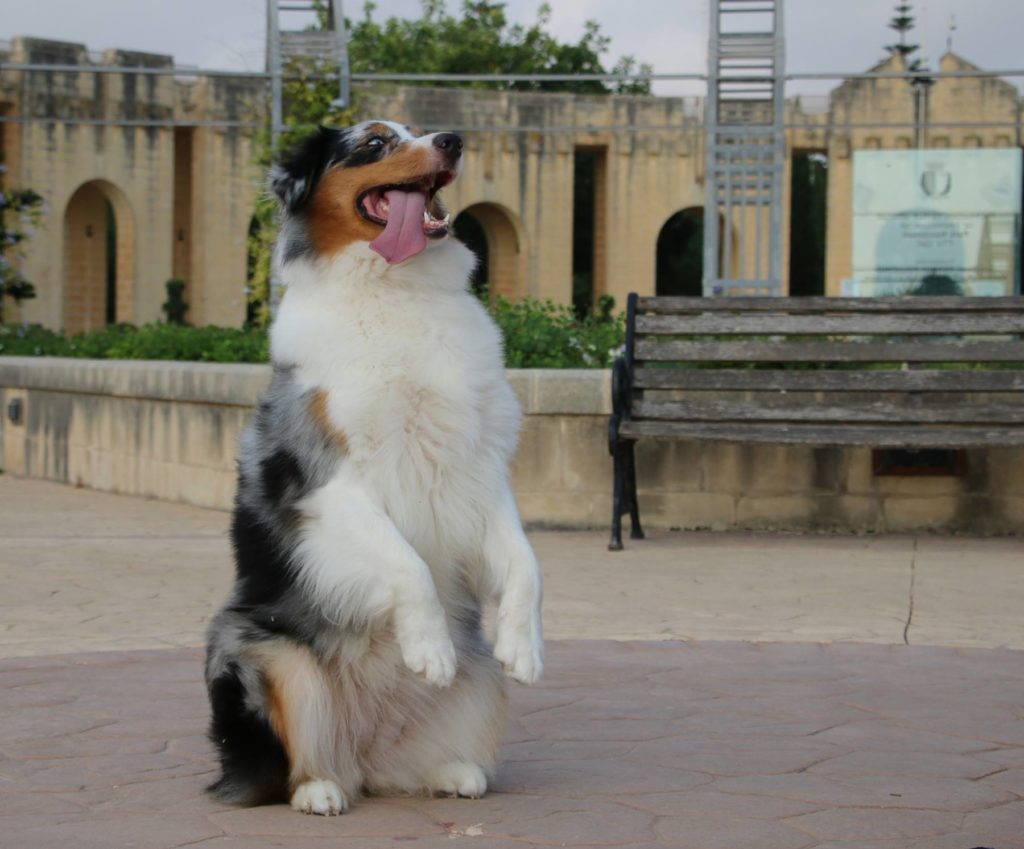Click and Treat!
I first came across clicker training in the late 90s when my father acquired his first bull terrier. She was not the easiest bitch to train and was a hard headed bitch in the true sense of the word. Now this was the 90s and the concept of dog training was very different to what it is today. So, I took to the internet to try and find a solution. I came across a website that explained the concept behind classical conditioning and clicker training and I bought my very first clicker.
It took the clicker 2 weeks to arrive, and that week I followed the step by step guide on the website religiously. Lo and behold the bitch took to it straight away, and before I knew it she was walking to heel and sitting on command. After that, I never looked back and since then I have trained show dogs, obedience dogs and service dog demo dogs using the clicker.
But what is a Clicker and what is Clicker training?
The clicker is a small device which when pressed makes a sharp clicking sound. It is used to mark a behavior. For it to work however, the dog needs to associate the ‘click’ with something positive. Therefore, the clicker is paired up with a treat. Now a treat can be anything the dog will sell his soul for. It can be food, toys, affection…. literally anything. In my dogs’ case, it is usually treats
How do you ‘charge the clicker’? How do you train the dog to associate the clicker with a treat?
Sit somewhere quiet with your dog, away from distractions. The dog can be on a leash or off leash. However, if it is a large area you are in, and if your dog tends to wonder off, I suggest you put a leash on it so you can have full control over him. Now, press the clicker and drop a treat. This is referred to as ‘Click and treat’ (C/T). Do this multiple times for about 5 minutes, then stop. Put the clicker away and do something else. Do not bore the dog. We are not teaching the dog anything at this point. We are merely charging the clicker, in other words, we are getting the dog to associate the clicker with the treat. You can do this exercise once a day or you can repeat it a couple of times or so. The important thing is to keep the sessions short, no longer than 5 minutes each time.
On average, from experience, the dog learns to associate the click with the treat in around 3 days. I’ve had dogs get the concept after 2 or 3 sessions, others took a little longer. Take all the time necessary. This is the most important step, and once your dog gets it, there is no limit to the things you can teach it.
The Dog knows that a click means a treat, what’s the next step in Clicker training?
The next step involves deciding on a behavior you want to teach and watching your dog. That’s right, wait for the dog to offer the behavior accidentally and then ‘Click and Treat’ (C/T). Let’s take an easy command that most people want to teach their dog, the command ‘Sit’. So, follow your dog around and as soon as the dog sits, as soon as his butt touches the ground ‘Click and Treat’. Then, ignore the dog. Repeat this a few times. Eventually the dog figures out that the game has changed. You are no longer clicking and treating randomly but rather something is triggering the click. Eventually, the dog figures this out and he will start offering the behavior more often, so much so, that you will start predicting when he is going to offer the behavior. When you get to that point, you need to add in the command, in our case ‘Sit’. So as soon as the dog sits: Give the command and C/T. Eventually phase out the clicker and use only treats. The next step is treating randomly. I hardly ever phase out treats completely however. I believe in keeping training fun and dogs working for their food.
For the more complex tricks, you will find that you need to break down the process into a sequence of different behaviors and teach them one by one. In the picture below Avril was performing a sequence of behaviors, which when combined together showed her putting her hands up at the sight of a toy gun, rolling over when I pretend to fire and playing dead afterwards. It was one trick but in reality it was made up of a sequence of 4 or 5 different behaviors. Sometimes you may need to coax some behaviors using treats, and that is also Ok.
In Conclusion
Don’t be afraid to experiment. Dogs are very intelligent animals. Australian Shepherds are extremely intelligent dogs… Not that I am biased or anything 🙂 You will find that once you have used the clicker to teach a few behaviors or tricks, the dog will start offering different behaviors at the sight of the clicker. Use this to your advantage when training complex behaviors. Most importantly, don’t stress about teaching your dog, make it a fun activity for both of you. Enjoy it and use the time to bond together. Good Luck!
